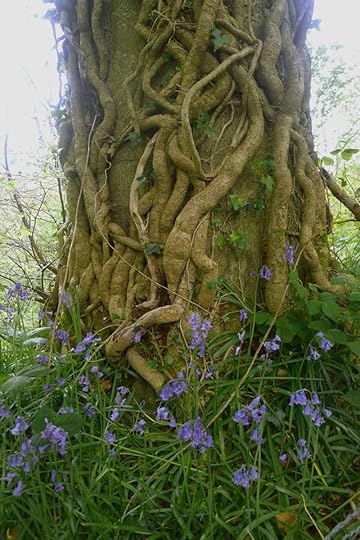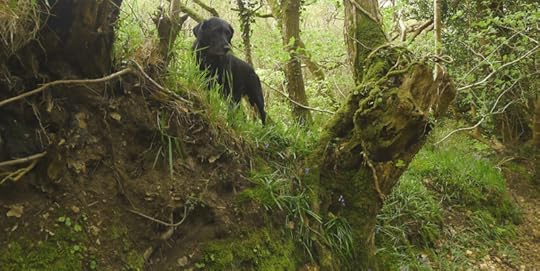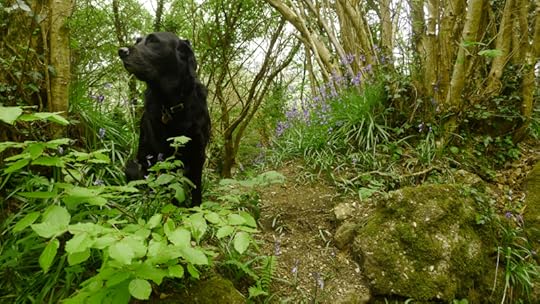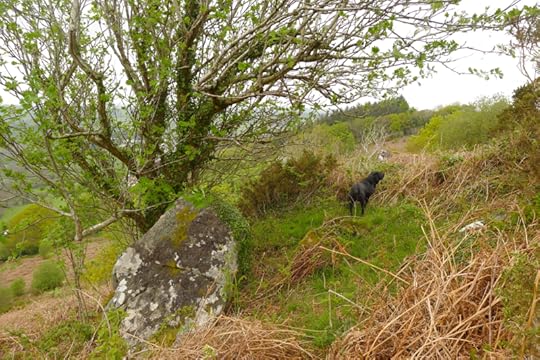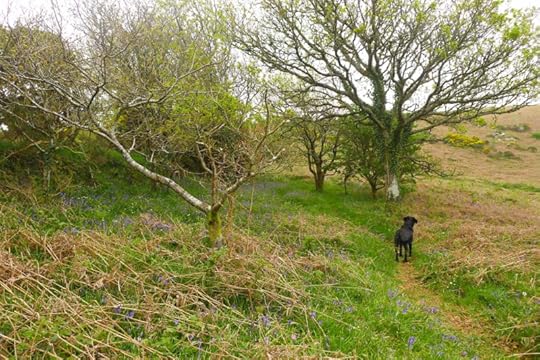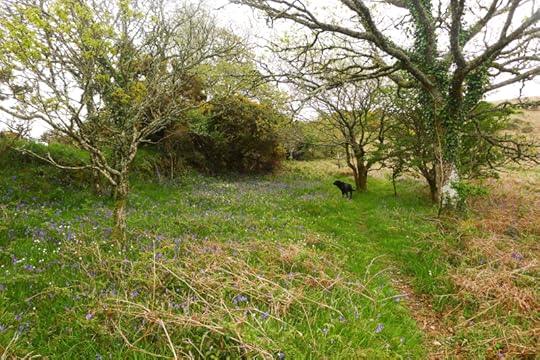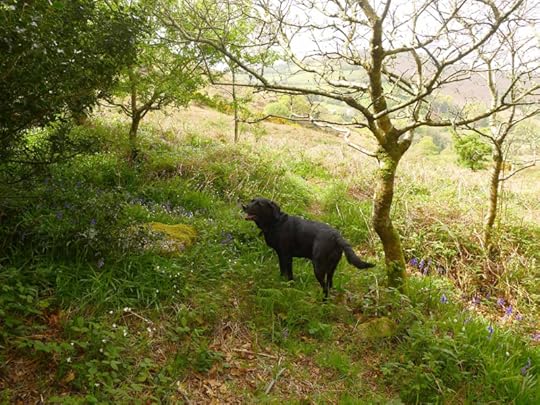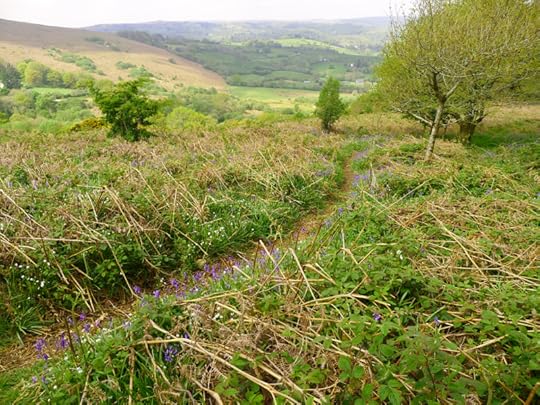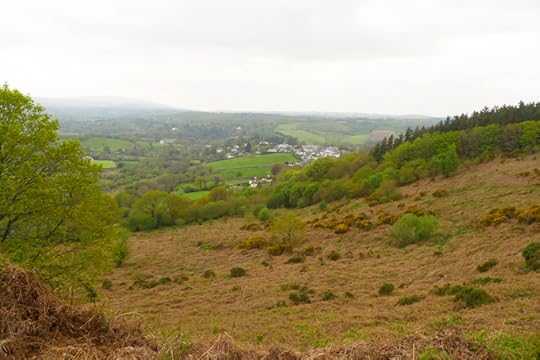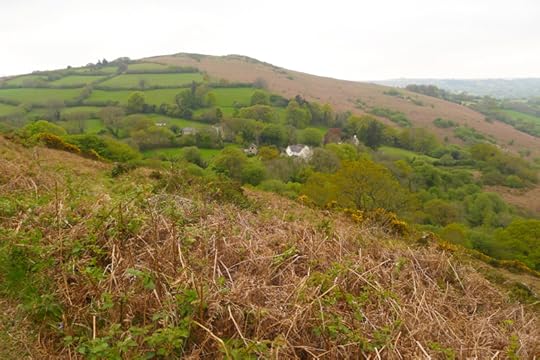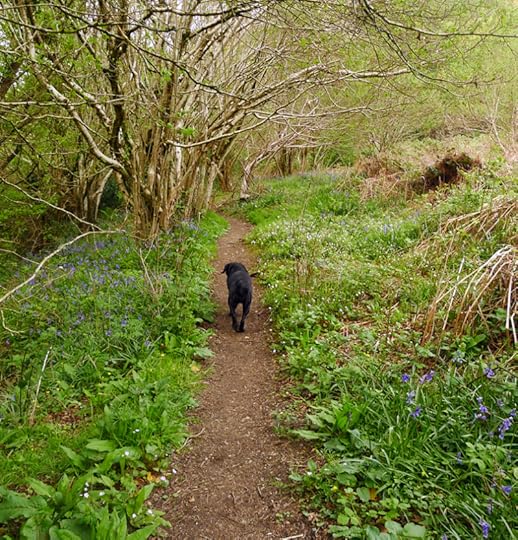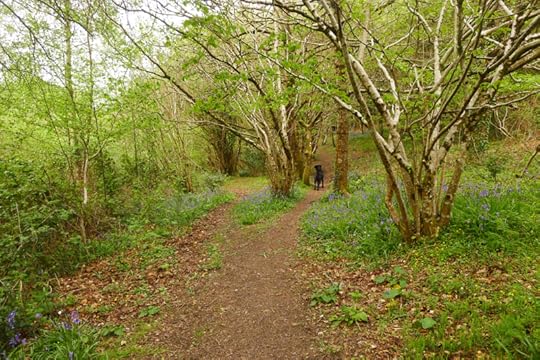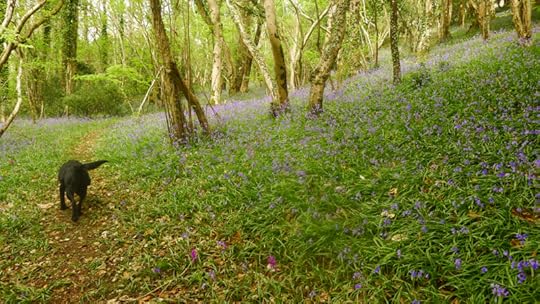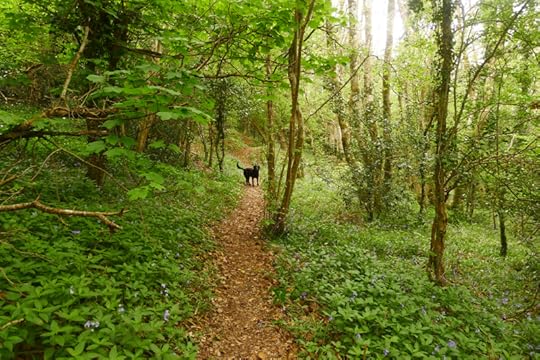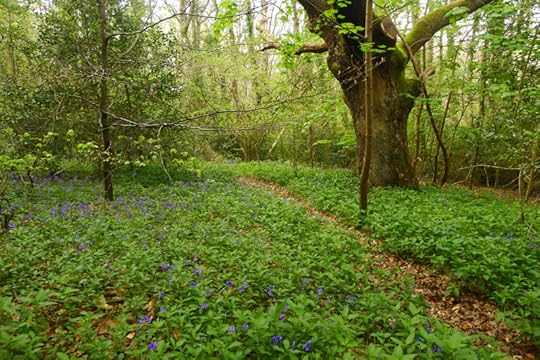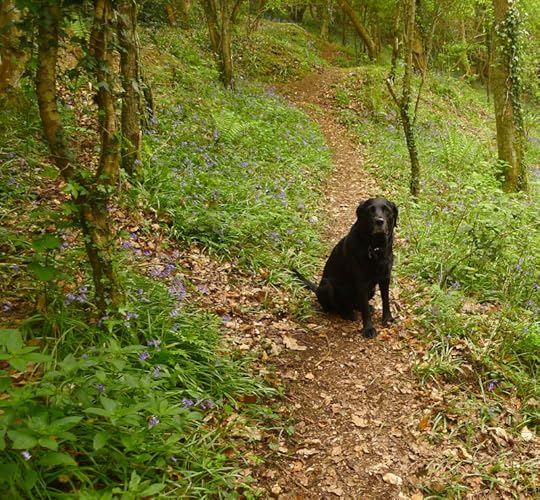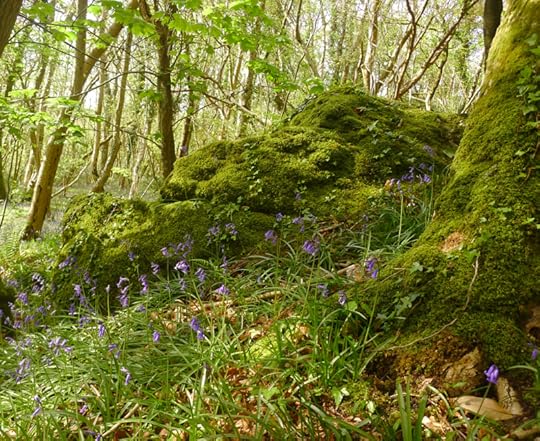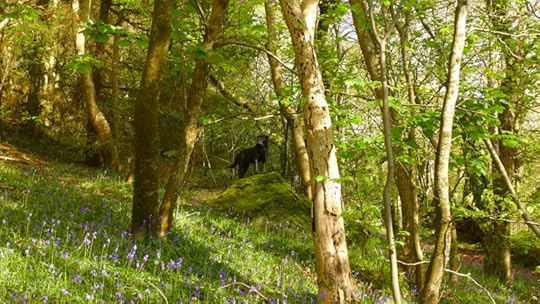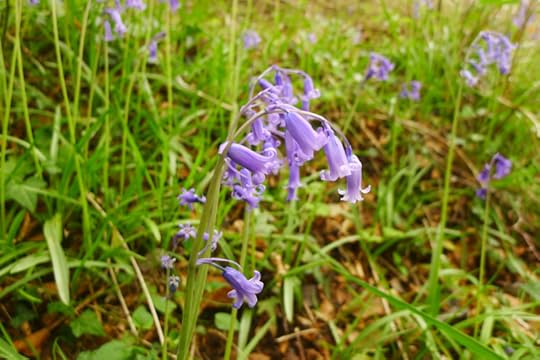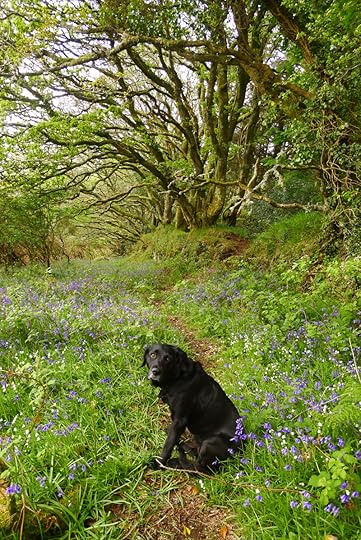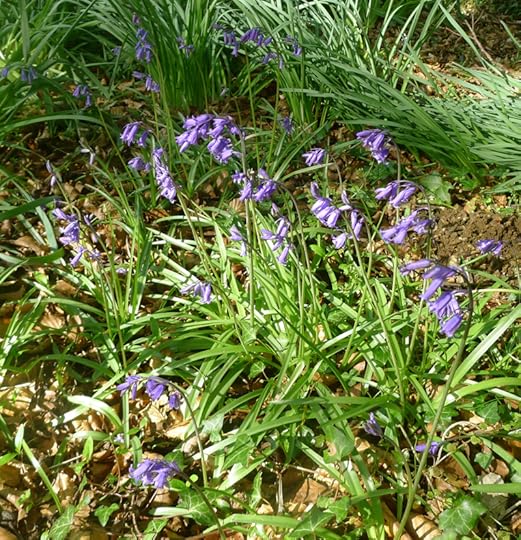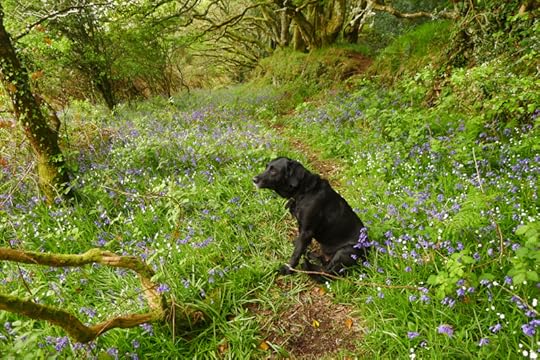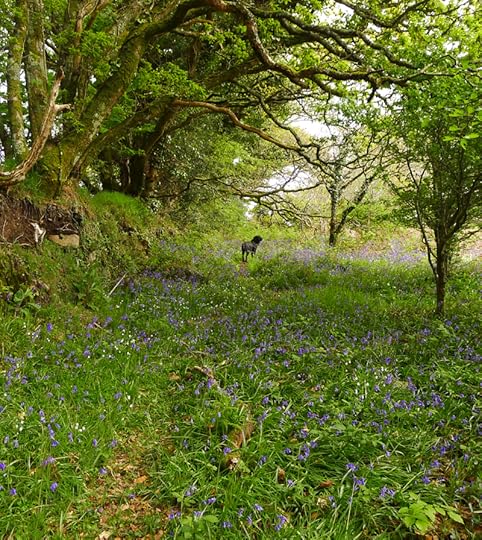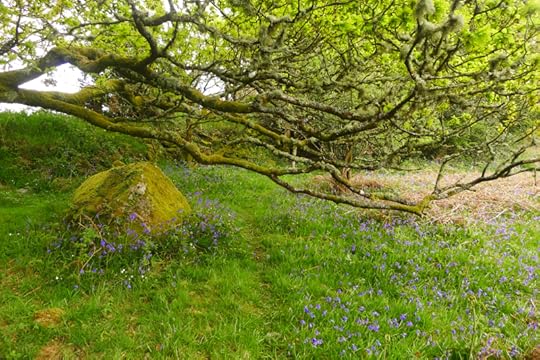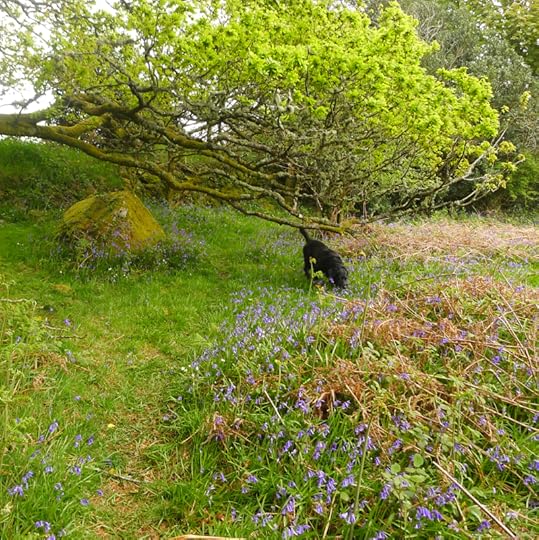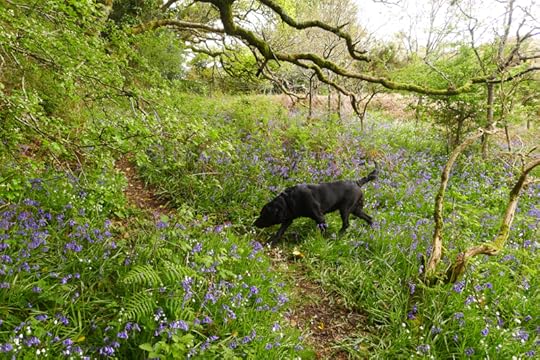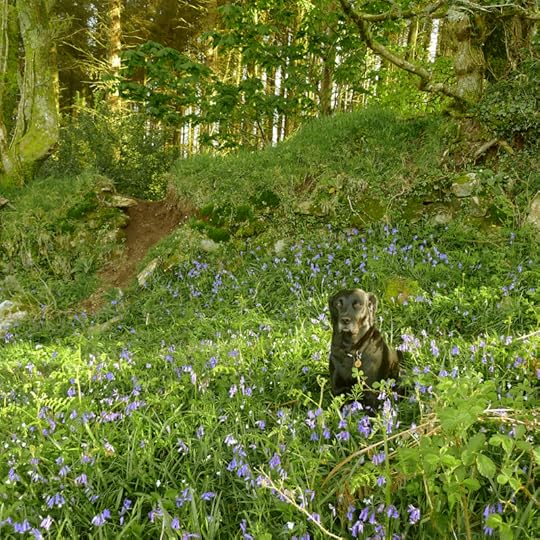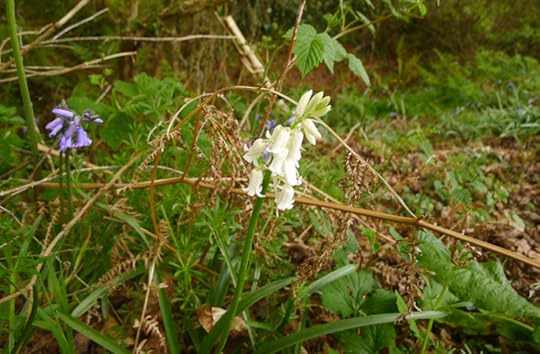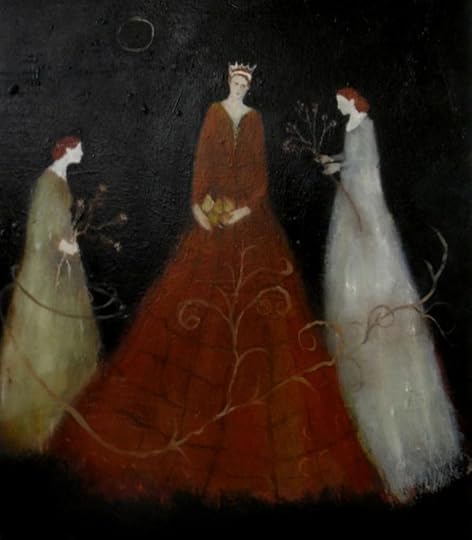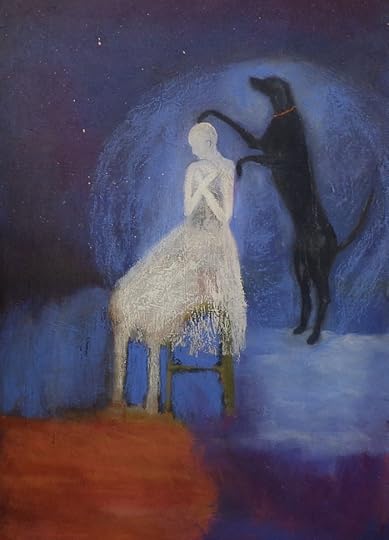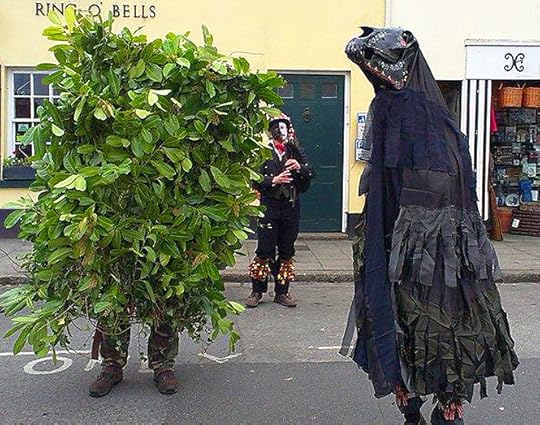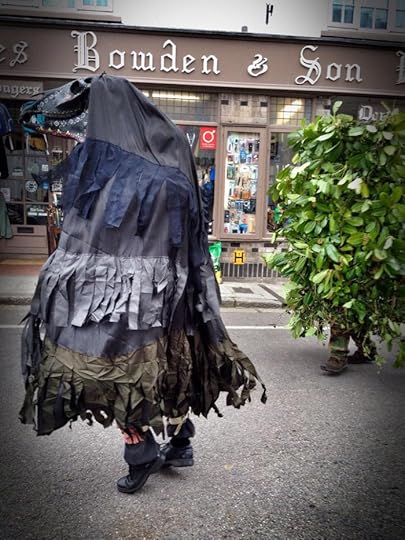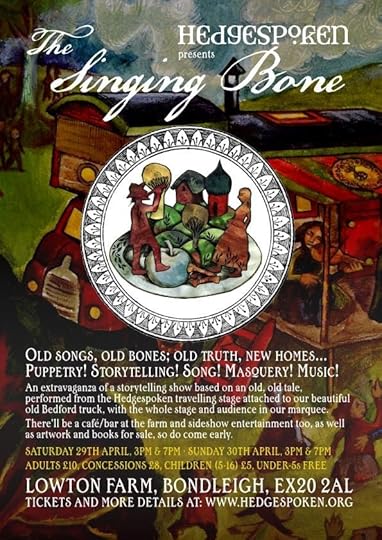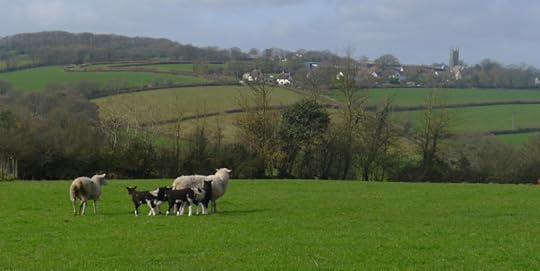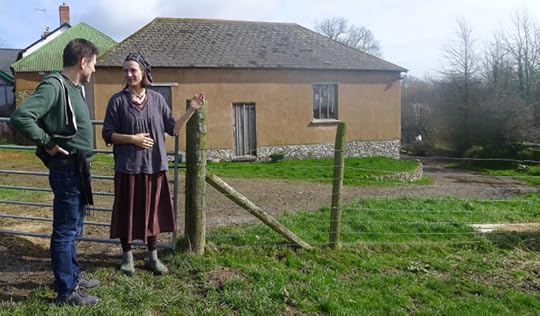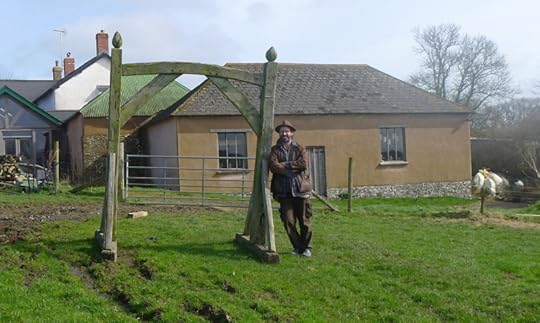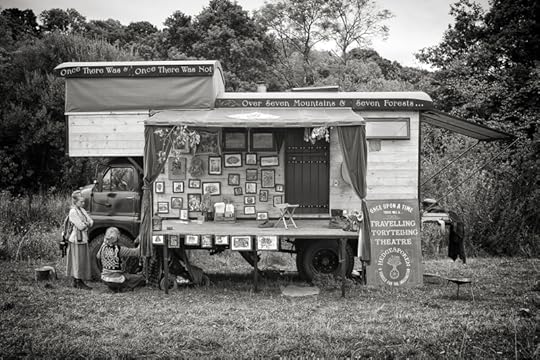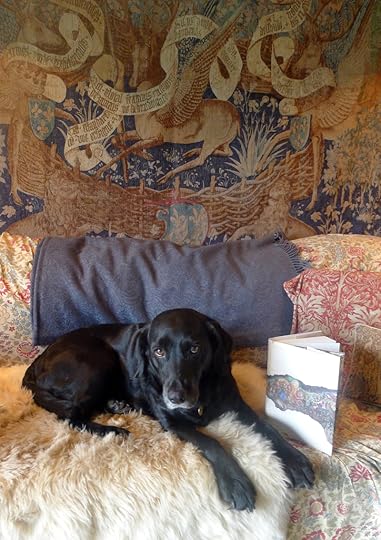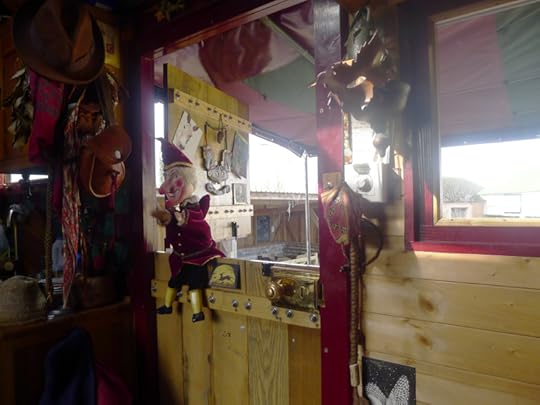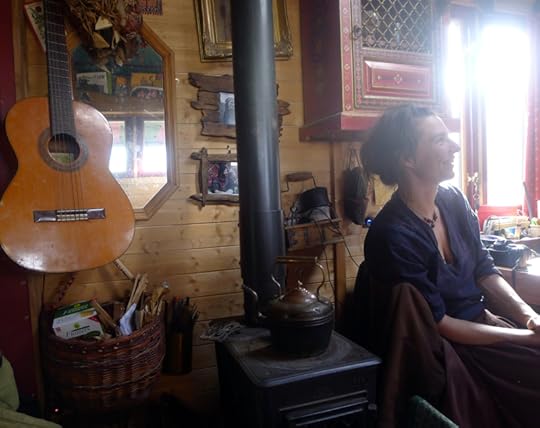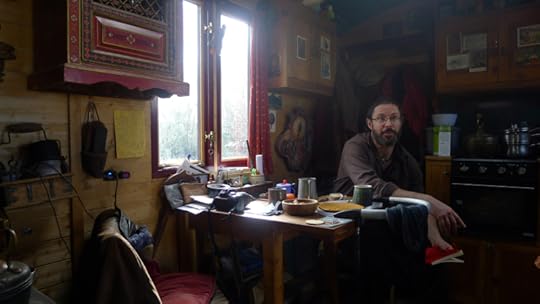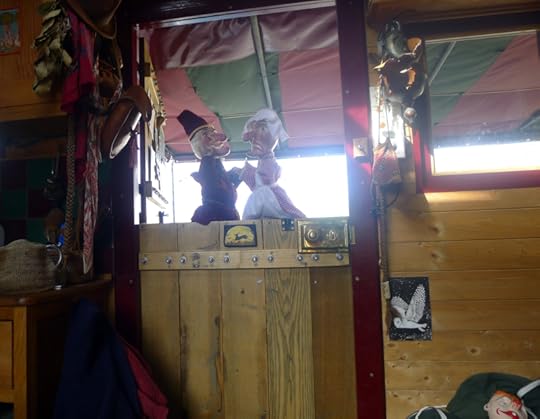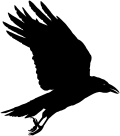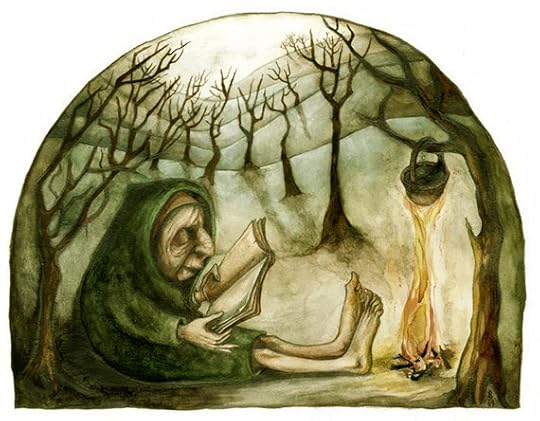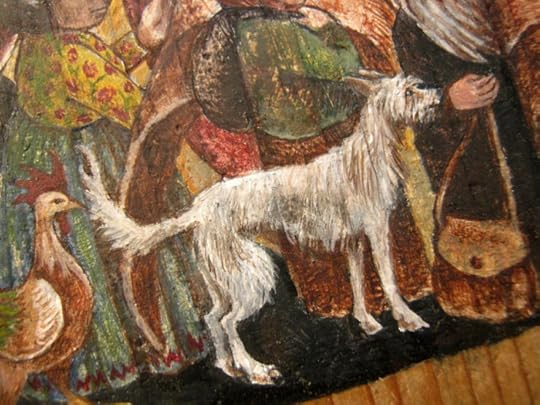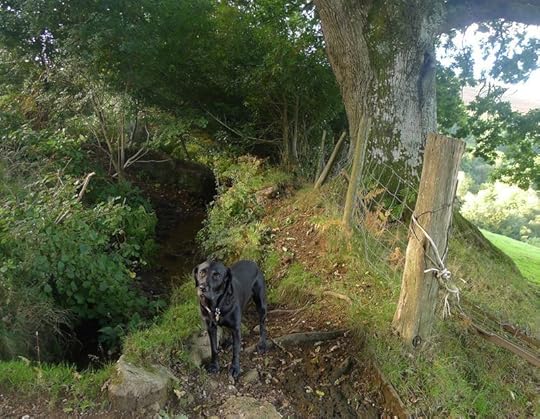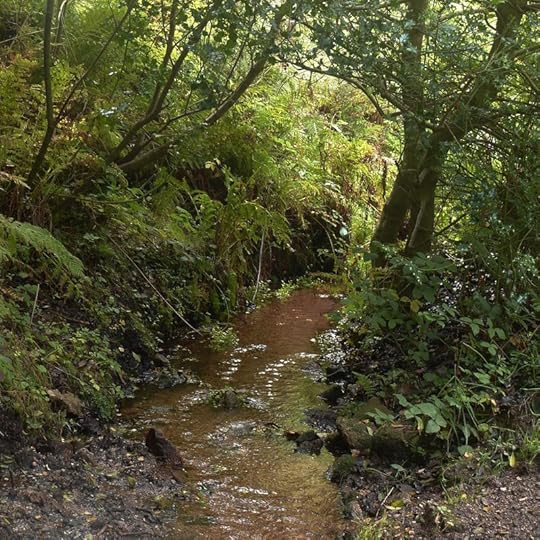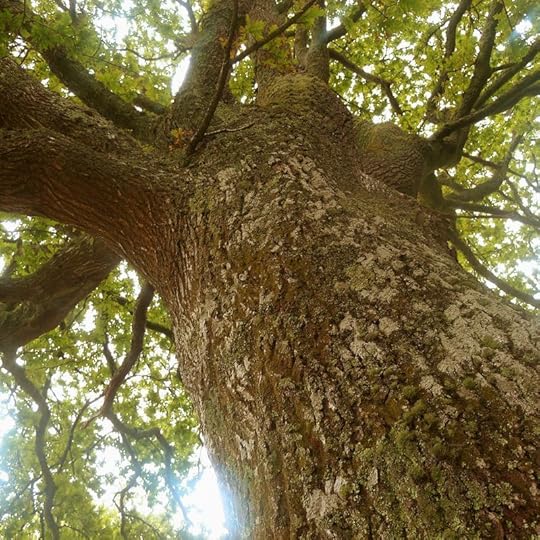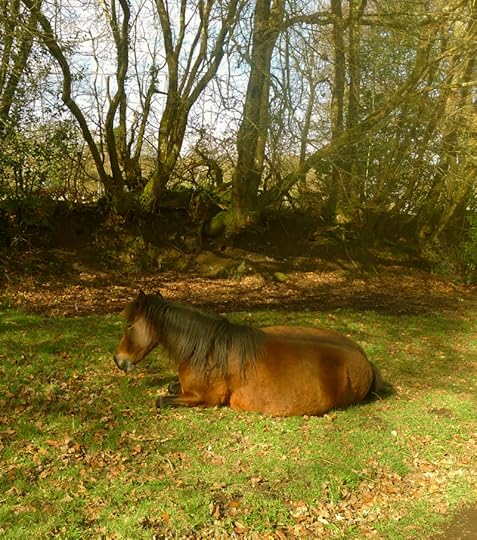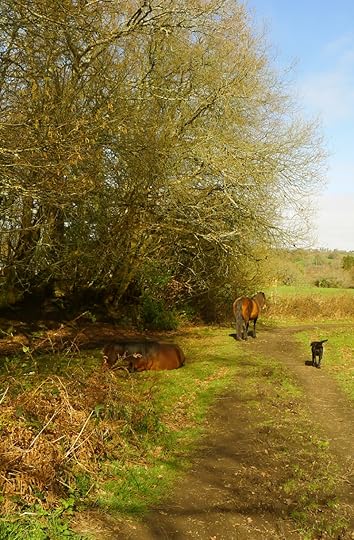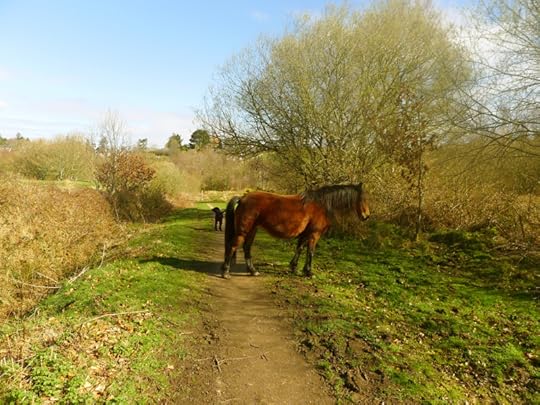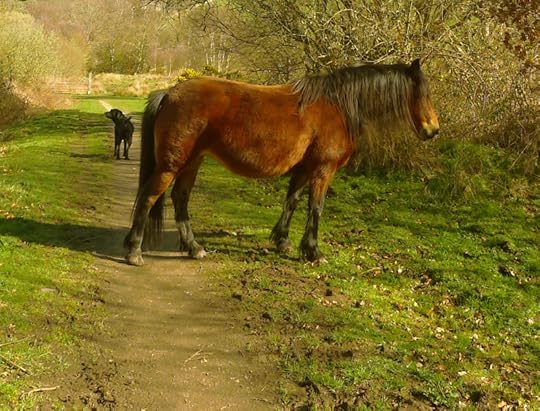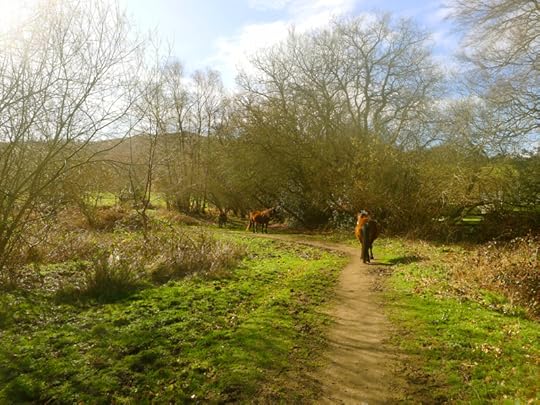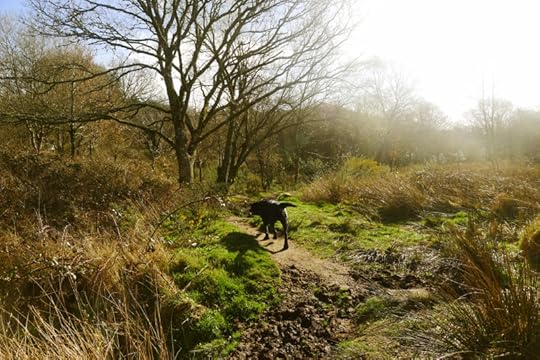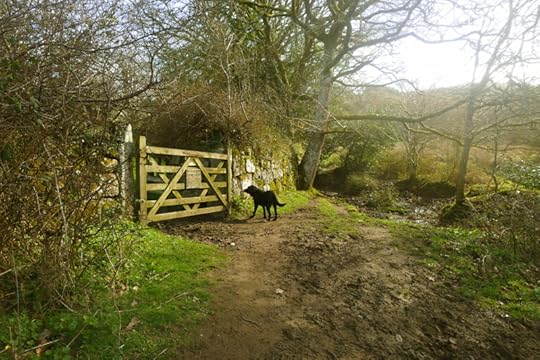Terri Windling's Blog, page 93
May 12, 2017
Morning Prayer
"A writer -- and, I believe, generally all persons -- must think that whatever happens to him or her is a resource. All things have been given to us for a purpose, and an artist must feel this more intensely. All that happens to us, including our humiliations, our misfortunes, our embarrassments, all is given to us as raw material, as clay, so that we may shape our art." - Jorge Luis Borges
This morning's prayer: May we have the skill to work with the raw materials we've been given, the clarity to understand their best use, and the tenacity to weave even thread spun from nettles into cloth that is beautiful and strong.
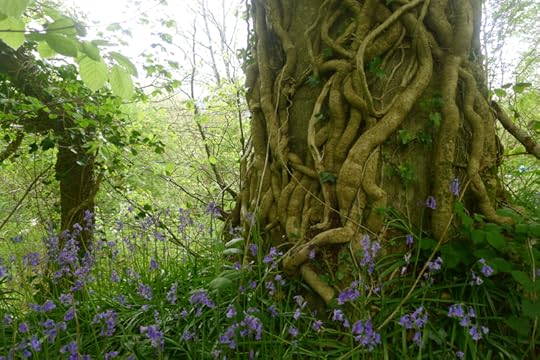 The Borges quote is from Twenty-four Conversations With Borges: Interviews by Roberto Alifano 1981-1983 (Grove Press, 1984). The poem in the picture captions is from A Cappella: Mennonite Voices in Poetry (University of Iowa Press, 2oo3). All rights reserved by the authors or their estates.
The Borges quote is from Twenty-four Conversations With Borges: Interviews by Roberto Alifano 1981-1983 (Grove Press, 1984). The poem in the picture captions is from A Cappella: Mennonite Voices in Poetry (University of Iowa Press, 2oo3). All rights reserved by the authors or their estates.
May 11, 2017
The Writing Life
From "How Can You Create Fiction When Reality Comes to Call?" by Carolyn Chute (author of The Beans of Egypt, Maine):
"This is a very personal and uplifting story of my life as a writer. I will include intimate confessions. The following is a typical day in my life.
"Eyes open up. Birds singing outside window. Oh, yes, and there is the husband. X-rated stuff happens. (Delete details.)
"Must go out with dogs. They have a dog door and a half-acre fenced in with trees and a little brook, but that isn't good enough. ... No, they have to have me go with them, so we can be a pack together.
"Typewriter with page 1,994 of novel screams from another room: I WANT YOU.
"I am scrambling to get dressed because the dogs are waiting at the foot of the stairs for the pack thing, which hasn't happened yet. They are hopping up and down. These are Scottish terriers with short legs, big heads, beady eyes and beards, and when I look at them, I melt and will do anything they want.
"But at this moment I am still scrambling to get dressed, and the typewriter is starting to really scream and kind of whimper from the other room. A truck pulls up in the yard, a member of our political group, one of those working-class politics groups you hear so much about.
"Bang! Bang! Bang! This is knuckles knocking on door.
"Dogs charge the door.
"Cuckoo clock coo coos six times.
"Husband is now scrambling to get dressed.
"Phone does not ring. Its bell is broken. It never rings. Thank heavens.
"Typewriter is starting to gasp and moan.
"All dressed, I race down the attic stairs and the pack is racing around, the dogs throwing themselves at the door behind which the guest stands.
"The dishes heaped in the sink make no sound. No screams. No barking. But they have one of those profound presences. I am a person who can't teach writing or make a living in any public way, as I get confused when interrupted or overstimulated. In a classroom or crowded room, I all but blank out.
"So my only income is from novels. This should explain the absence of dishwasher, clothes dryer, running hot water, electricity in all rooms, health insurance and other such luxuries. The Scotties we got through friends. So don't go rolling your eyes about those 'expensive Scotties.'
"Husband opens front door for guest, as I head out the back door with the pack.
"Pack does its thing, racing around, checking chipmunk holes, sniffing guest's truck to see what the news is from the outside world. It is a beautiful morning, and everything smells sweet.
"Returning to the house, I close dogs in another room, so they won't bother the guest, who is sitting in a rocking chair with tea and telling about how upset he is with the latest bad thing the corporations and government (same thing) have done to us. (I will delete all his words here in order to keep this an uplifting and cheery article.)
"Upstairs the typewriter is squealing and howling...."
Eventually Chute's house quiets down.
"By the time there are 10 coo coos, guest has left," she writes. "Dogs are lying around on the rockers. Husband has gone to town for the mail.
"I finish hanging the laundry and go up to the typewriter and sit there, holding my head trying to quiet my head. You see, I can't just switch from life mode to writer mode. Usually it takes three days to get into the writer mode. Three days of quiet non-life mode, lots of coffee and no interruptions.
"Writing is like meditation or going into an ESP trance, or prayer. Like dreaming. You are tapping into your unconscious. To be fully conscious and alert, with life banging and popping and cuckooing all around, you are not going to find your way to your subconscious, which is a place of complete submission. Complete submission.
"I open my eyes. I look at the page. I type a couple of lines. Pop! The 'n' breaks off the daisy wheel.
"These daisy wheels are $30 apiece! My old well-made typewriter had one daisy wheel, which lasted 11 years. But this is a new typewriter. The cheesy typewriters they make now use three daisy wheels a day. My mind abandons writer mode. I am now in crisis mode again....
"U.P.S. truck pulls up. Dogs hurtle out the dog door into their pen and throw selves against the fence wire to show the U.P.S. man what will happen to him if he comes in the house. I run downstairs and out, so I can sign for the packages. Eight galleys from eight publishers wanting eight blurbs. Blurbs are those little positive-sounding quotes on the backs of books. I am not much of a reader. No time. It takes me two to six months to read a book, so these guys are definitely barking up the wrong tree.
"U.P.S. truck heads out and down the long dirt road and away.
"I start back up the attic stairs to the gasping weeping typewriter, and husband arrives home with mail. Three more galleys in the mail, plus 20 letters and cards, most of which are urgent, or at least requiring a letter in return. Not many bills. Just our one huge mortgage on the house that we had to take out in order to eat.
"Clock coo coos."
And so Chute's writing day goes on, and no writing is actually done.
To read Chute's essay in full, go here. It's pretty funny, in a rueful kind of way, since most of us have had those kinds of days -- even writers who switch from life mode to writing mode more easily. And keep in mind that the piece was published back in 1999, before email exploded and the internet became such a ubiquitous attention-breaker.
For myself, I keep returning to this quote by Saul Bellow, which I've written on the wall close to my writing desk:
"I feel that art has something to do with the achievement of stillness in the midst of chaos. A stillness which characterizes prayer, too, and the eye of the storm. I think that art has something to do with an arrest of attention in the midst of distraction.���
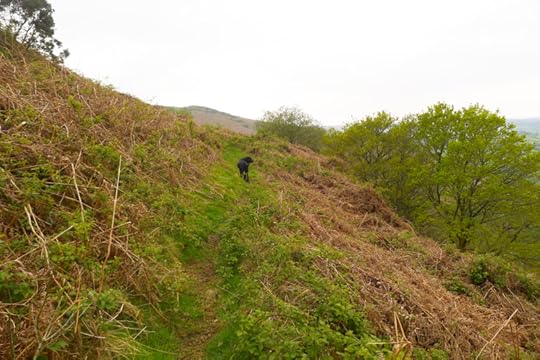 Words: The passage above is from an essay published in The New York Times (September 27, 1999). The poem in the picture captions is from Earful of Cider (August 2011). All rights reserved by the authors. Pictures: Early morning on Nattadon Hill.
Words: The passage above is from an essay published in The New York Times (September 27, 1999). The poem in the picture captions is from Earful of Cider (August 2011). All rights reserved by the authors. Pictures: Early morning on Nattadon Hill.
May 10, 2017
Seeing green
Jill Paton Walsh on writing for children:
"I suppose that it is because literature is so abstract that people evince so little common sense about it. For children's writers, like other writers, practice a craft. I don't imagine many people think that a children's doctor need not be so good at medicine as his colleagues, or that a carpenter who 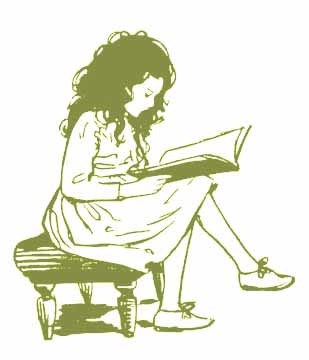 makes toys can manage with shoddy joinery. The truth is that a book which is bad literature just doesn't have much effect of any kind; doesn't work for anyone, young or old. Like any other writer, a children's writer has got to be good.
makes toys can manage with shoddy joinery. The truth is that a book which is bad literature just doesn't have much effect of any kind; doesn't work for anyone, young or old. Like any other writer, a children's writer has got to be good.
"It isn't even true that there is somehow a different sort of goodness appropriate to children's books. The problems and the satisfactions of the writer-craftsman working for children are mainstream problems, mainstream satisfactions. I am taking it for granted that an adult writer will seek to embody and communicate adult insights in his books, will not solve problems by talking down to his audience. That being so, one might think that the writer for children has a much greater problem in getting himself understood. But that thought underestimates children, and over-values understanding.
"One doesn't specially want a child reader to understand intellectually, to (as it were) decode the message in a work of fiction. After all, he doesn't -- God keep us from it! -- have to sit an examination on his reading. It is enough, it is better, if the reader simply experiences a book, simply feels it. And a reader can feel truly on a very partial understanding.
"I will instance my own children, watching the televised War and Peace. When Natasha met clandestinely with Kuriagin they became deeply agitated. She couldn't! -- what would happen? -- what about Prince Andre? -- oh dear no! Of course, they couldn't understand the passion that motivated Natasha; they saw it entirely as a question of loyalty. But it is that, among other things. They see only a part of the whole, but what they do see is seen truly, not in distortion.
"Fully understanding a book is too often like being led forward in front of a pointilliste painting, and shown how the green is made up of spots of pure blue and pure yellow. One 'understands,' but one can no longer see green.
"I can do without being understood," Walsh concludes, "as long as the reader sees green. The problem of being comprehensible is an emotional, an aesthetic problem -- that of making the book adequately embody its meaning: that of getting the reader to 'see green' and making the seeing of green, just thus and then, emotionally meaningful. This is the central problem of literary art."
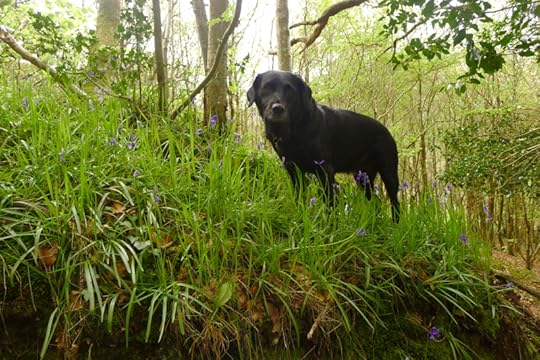 Words: The passages above and in the picture captions are from "Seeing Green" by Jill Paton Walsh, published in The Thorny Paradise: Writers on Writing for Children, edited by Edward Blishen (Kestral Books, 1975); all rights reserved by the author. I recommend seeking out Blishen's book and reading the essay in full. Pictures: Bluebell season in the woods behind the studio. The drawing is an illustration for Heidi by Jessie Willcox Smith (1863-1935).
Words: The passages above and in the picture captions are from "Seeing Green" by Jill Paton Walsh, published in The Thorny Paradise: Writers on Writing for Children, edited by Edward Blishen (Kestral Books, 1975); all rights reserved by the author. I recommend seeking out Blishen's book and reading the essay in full. Pictures: Bluebell season in the woods behind the studio. The drawing is an illustration for Heidi by Jessie Willcox Smith (1863-1935).
May 9, 2017
Returning to work
Lately it's been one thing after another keeping me away from my desk: life and art tugging in two directions instead of pulling in harness together. I'm not such a delicate flower that I can't work without perfect peace and quiet, but when daily life makes too many demands and keeps me out of the studio altogether, I start to feel oddly unmoored (if you'll excuse the pun) -- as though the deep focus of creative work is what roots me in the Devon soil. I'm a sociable person, I love my family and friends, but I'm also an introvert by nature; and we introverts need solitude the way plants need rain. We wilt without it.
Today, I am back in the studio, drinking in the silence of early morning and feeling my parched soul turn green again. In the woods and fields, wildflowers are blooming and their abundance seems miraculous. I am grateful for the quiet, and the bird's dawn chorus. I am grateful to be back among paints and books. I am grateful for the hound snoring beside me, and for the wildflowers brightening my desk. I'm even grateful for the things that pull me from my work -- for they challenge me, stretch me, keep me from being too self-absorbed and self-contained -- but I am doubly grateful when let me go, allowing a return to the moss, brambles, and daydreams of my natural habitat.
All of us have different needs, however. The solitude that invigorates me would be dull or stifling to an artist of a different temperament -- my husband, for example, who thrives on the collaborative nature of puppet and theatre work, or urban friends who need the pace of a great city to keep their creative juices flowing.
Here 's K.M. Peyton, author of the Flambards trilogy, with a charming description of her work/life balance, from an essay published in 1975:
"When I get frustrated by the demands of other commitments deflecting me from the writing, I console myself that they are the lifeblood of what I am writing about, and the ivory tower, attractive as it may appear at times, would not suit. The [stereotypical] writer, quiet in his room with coffee and lunch served, the interruptions deflected by a devoted wife, is at times my great envy; but at other times I feel that the very frustrations are somehow a part of my driving force. My most difficult book to date, A Pattern of Roses, was written through the winter when a forty-foot boat was being built full-time in the garden and a constant stream of nautical maniacs was in and out of the house at all times, drinking coffee and needing a labourer's meals, as many as twenty-four one weekend.
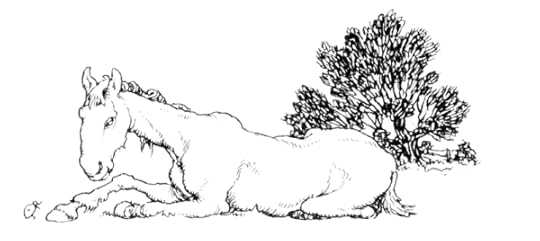
"I have no help at home, and consider myself fully occupied with the normal ferrying of schoolchildren, housework and looking after five horses (since, in desperation, cut down to two). It was during this winter that one of the horses, lent by a farmer from the village three miles away, used to get out of the field and and go home, sometimes taking the other four with her, at a flat gallop. When this happened in the middle of the night my husband used to turn over in bed and remind me, as we listened to the departing clatter of hooves down the lane, that the horses were my department; his was the boat. But out of these calamites, nice cameos remain: creeping through someone's back yard with headcollar in hand, dressed in long nightdress, anorak and gum-boots, and being speared by torchlight from the bedroom window, or returning home in the car with my daughter riding the mare ahead in the light from the headlamps, cantering fast along the verge with only a halter for tack, and me thinking, 'Oh, God, if she falls off the mare will go all the way back again....'
"I think now," Peyton concludes, "if I only had a book to write, and nothing else to do, I would just sit and stare into space. To know that on Tuesday, for instance, Fred will call for coffee and chat at half-past ten, the butcher will interrupt and want to know what I shall want next Friday, and that I've got to get to the nearest shop, three miles away, to buy a loaf before it shuts at one, concentrates the mind wonderfully. My mother needs to talk to me at length twice a week at least, a pony needs shoeing (five miles there and five miles back and an hour in the middle), and in the summer the garden and the field are a full-time job (mine). It is no good at all pleading my vocation, for my only local claim to fame is not in writing but as Secretary of the Pony Club, and when this keeps me almost fully occupied throughout the summer months I console myself with the richness of material I am building up in this direction. The fact that ponies are now out of fashion, a relic of the nineteen thirties and forties, will not deter me from embarking on this saga before long, so eagerly does the spring bubble up. Where would I be without my interruptions? Still staring at a blank sheet in the typewriter."
Likewise, Katherine Paterson (author of Bridge to Terabithia) reflects on the problems of work/life balance in the early part of her career:
"I had no study in those days, not even a desk or file or bookcase to call mine alone," she recalls. "It might have happened sooner [the writing of work worthy of publication] had I had a room of my own and fewer children, but somehow I doubt it. For as I look back on what I have written, I can see that the very persons who took away my time and space are those who have given me something to say."
"The great thing, if one can," said C.S. Lewis, "is to stop regarding all the unpleasant things as interruptions of one's 'own,' or 'real' life. The truth is of course that what one calls the interruptions are precisely one's real life."
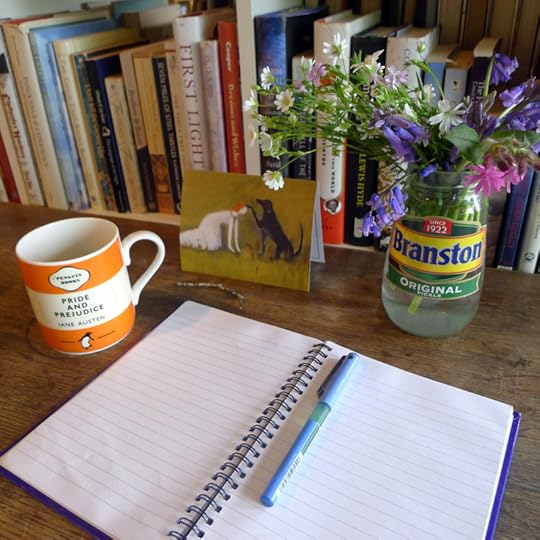 The passage by K.M. Peyton is from "On Not Writing a Proper Book," published in The Thorny Paradise: Writers on Writing for Children, edited by Edward Blishen (Kestral Books, 1975); the passage by Katherine Paterson is from Gates of Excellence (Puffin, 1981); all right reserved by the authors. The C.S Lewis quote is part of a passage from a letter to Arthur Greeves, 1943. My "Writer's Prayer," in the picture captions, has appeared here previously but seems appropriate for re-posting today. The drawing is by William Heath Robinson (1872-1944).
The passage by K.M. Peyton is from "On Not Writing a Proper Book," published in The Thorny Paradise: Writers on Writing for Children, edited by Edward Blishen (Kestral Books, 1975); the passage by Katherine Paterson is from Gates of Excellence (Puffin, 1981); all right reserved by the authors. The C.S Lewis quote is part of a passage from a letter to Arthur Greeves, 1943. My "Writer's Prayer," in the picture captions, has appeared here previously but seems appropriate for re-posting today. The drawing is by William Heath Robinson (1872-1944).
May 8, 2017
Tunes for a Monday Morning
My apologies for the paucity of posts recently -- a combination of life, health, and family matters has kept me out of the studio. But it's a new week and I'm starting again, returning to work and hoping for a good stretch of quiet, interruption-free time.
Let's start the week gently, with lyrical poetry and women's voices in beautiful harmony....
Above: "The Blood I Bled" by The Staves, a trio of sisters from Watford, Hertfordshire. The performance was filmed for the American program A Prairie Home Companion last autumn.
Below: "Damn It All" by The Staves, performed at KUTX radio station in Austin, Texas in March.
Above: "The Lost Sky" by Jesca Hoop, performed on A Prairie Home Companion in February, backed up by Chris Thile, Sarah Jarosz, Aoife O'Donovan, Stuart Duncan, Alan Hampton, and Julian Lage. Hoop is an American singer-songwriter based in Manchester, England.
Below: "Pegasi" by Jesca Hoop.
And one more:
"Home" by The Henry Girls, a trio of sisters from Donegal, Ireland, backed up by The Inishowen Gospel Choir.
The gorgeous art today is, of course, by Jeanie Tomanek, who lives in Atlanta, Georgia.
"I paint," she says, "to explore the significance of ideas, memories, events, feelings, dreams and images that seem to demand my closer attention....Literature, folktales, and myths often inspire my exploration of the feminine archetype."
To learn more about the artist and her work, please go here.
May 1, 2017
Tunes for a Monday Morning
Happy Beltane and May Day!
The music this morning is from Lisa Knapp, a British folk musician who has long been interested in the traditional songs of the season. Her extraordinary new album, Till April is Dead: A Garland of May, is highly recommended -- as is her previous five-track release, Hunt the Hare: A Branch of May.
Above: Knapp's video for "Till April is Dead," the title song of her new album. As music reviewer Thomas Blake describes it: "Sayings from French, German, Spanish, Gaelic and English folklore become entwined (in both sound and meaning) over simple plucked strings before Knapp sings a lighter than air rendition of Hal-An-Tow, a song made famous by the Watersons and the Albion Band. The song���s inherent strangeness -- the coupling of nonsense words with quasi-religious and mythological imagery -- is only thrown into sharper focus by its new setting."
Below: A beautiful version of the English folk song "The Blacksmith" (audio only), from a previous Knapp album, Wild and Undaunted.
Above: The spooky, folkloric video for Knapp's song "Black Horse." This one comes from Hidden Seam, and features vocals by James Yorkston.
Below: "Enter Ariel" by Clara Sanabras -- with Lisa Knapp, Chorus of Dissent Britten Sinfonia, London Voices, and the Ceyda Tanc Youth Dance. The song comes from Hum About the Ears, a thoroughly gorgeous folk opera by Sanabras based on Shakespeare's The Tempest. To learn more about it, please go here.
And to end with:
Lisa Knapp's rendition of "Don't You Go Rushing," a traditional May song collected by Cecil Sharp in Somerset in 1907.
The photographs above come from previous May Day celebrations here in Chagford. That's Howard dancing the Obby Oss, and Jason of England dancing the Jack-in-the-Green. The piper is Andy Letcher. For more May Day photos, go here.
And to learn more about the folklore of May Day, go here. Up the May!
April 25, 2017
Coming up this weekend:
Rima Staines & Tom Hirons are launching their summer show at Lowton Farm this weekend: The Singing Bone, a lovely piece of storytelling woven with music and puppetry. Soon after, Hedgespoken hits the road, carrying stories, art, and magic to festivals, communities, and off-grid performances spaces across the British Isles. We won't see much of them again until autumn, which is when they return to Lowton Farm to work on their first full-lenth theatre piece, The Hedgehog's Bride: devised by the Hedgespoken puppetry team, and directed by my husband Howard.
This weekend's event is also a celebration of the Hedgespoken dream, and of all who have supported it. Once upon a time this traveling folk theatre was just a gleam in Tom & Rima's eyes -- but after a successful crowd-funding campaign, followed by a lot of hard, hard work, this amazing couple have it all up and running as they'd planned, with several projects now coming to fruition.
One of these projects is Tatterdemalion, a beautiful and deeply folkloric new book by Rima and Sylvia Linsteadt that has just been published by Unbound. The text, by Sylvia, was written in response to Rima's paintings, and the result is pure enchantment. Here's Sylvia explaining the project:
Below: Tilly gives our brand new copy of Tatterdemalion her seal of approval.
If you're anywhere within striking distance of Devon, please come join us at the Hedgespoken show this weekend. (Tickets here.) I'll be there on Saturday. Howard, as part of the Hedgespoken team, will be there on both Saturday and Sunday, debuting his new "Punch & Judy" puppet show as one of the side attractions.
Below: The wicked, incorrigible Mr. Punch making an impromptu appearance in the Hedgespoken doorway....
Also, for any of you who live Totnes-way, Howard will be at the Totnes Party in the Town on Friday night, directing the performers who are part of Alice Oswald's poetry procession at 8 pm. (Look for the crows!)
April 24, 2017
Tunes for a Monday Morning
This morning we start by going out into "The Woods" with Polly Paulusma and Rima Staines. The song is from Polly's album Finger & Thumbs. The video features stop-motion/paper-cut animation by Rima. It was the first piece of animation she'd ever done.
Below: "Lake Tahoe" by Kate Bush, from her album 50 Words for Snow. This touching video, directed by Bush herself, tells the tale of a dog longing for his owner. "It has all been created in camera with shadow puppets, one of my favourite art forms because of its simplicity," she says.
Above: "When I Grow Up," performed by the Swedish folk duo First Aid Kid. The song was written by by Karin Dreijer Andersson (aka Fever Ray), and the stop motion/paper-cut animation is by Rachael Greenfield.
Below: "Furr," by the American alt folk band Blitzen Trapper, about a wolf-boy in the woods of Oregon, with animation directed by Jade Harris. The video quality isn't as sharp as it could be, alas, but the song is charming.
And one more:
"Within the Rose," by British alt folk band Matthew and the Atlas (from their album True North), with shadow puppet animation by Neil Coxhill. Simply gorgeous, song and video alike.
I'm on a Writing Retreat at the moment -- but I set up this post for you in advance, and very much hope you enjoy these tunes. If you'd like a little more animation this morning, go here.
Have a good start to the week, everyone.
The art today is by Rima Staines. To see more of her magical work, please visit her website, blog, and the Hedgespoken page.
April 21, 2017
The Peace of Wild Things
Fridays are my day for re-visiting posts from the Myth & Moor archives. Since yesterday's offering included a passage from Priscilla Stuckey's Kissed by a Fox, here's another snippet from the same fine book. This post first appeared in October, 2014.
During my coffee break beside the stream yesterday, I was struck by the following words in Priscilla Stuckey's Kissed by a Fox (and Other Stories of Friendship in Nature):
"If mind belongs to humans alone," she writes, "then stones, trees, and streams become mere objects of human tinkering. We can plunder the earth's resources with impunity, treating creeks and mountaintops in Kentucky or rivers in India or forests in northwest America as if they existed only for economic development. Systems of land and river become inert chunks of lifeless mud or mechanical runs of H2O rather than the living, breathing bodies upon which we and all other creatures depend for our very lives.
"Not to mention what 'nature as machine' has done to our emotional and spiritual well-being. When we regard nature as churning its way forward mindlessly through time, we turn our backs on mystery, shunning the complexity as well as the delights of relationship. We isolate ourselves from the rest of the creatures with whom we share this world. We imagine ourselves the apex of creation -- a lonely spot indeed. Human minds become the measure of creation and human thoughts become the only ones that count. The result is a concept of mind shorn of its wild connections, in which feelings become irrelevant, daydreams are mere distractions, and nighttime dreams -- if we attend to them at all -- are but the cast-offs of yesterday's overactive brain. Mind is cut off from matter, untouched by exingencies of mud or leaf, shaped by whispers or gales of wind, as if we were not, like rocks, made of soil.
"And then we wonder at our sadness and depression, not realizing that our own view of reality has sunk us into an unbearable solipsism, an agony of separateness -- from loved ones, from other creatures, from rich but unruly emotions, in short, from our ability to connect, through senses and feeling and imagination, with the world that is our home."
A little later in the same essay she writes:
"And here lies the crux of the matter: to say that nature is personal may mean not so much seeing the world differently as acting differently -- or, to state it another way, it may mean interacting with more-than-human others in nature as if those others had a life of their own and then coming to see, through experience, that these others are living, interactive beings.
"When nature is personal, the world is peopled by rocks, trees, rivers, and mountains, all of whom are actors and agents, protagonists of their own stories rather than just props in a human story. When Earth is truly alive, the world is full of persons, only some of whom are human."
In an essay on animal consciousness published in Lapham's Quaterly, John Jeremiah Sullivan notes:
"If we put aside the self-awareness standard -- and really, how arbitrary and arrogant is that, to take the attribute of consciousness we happen to possess over all creatures and set it atop the hierarchy, 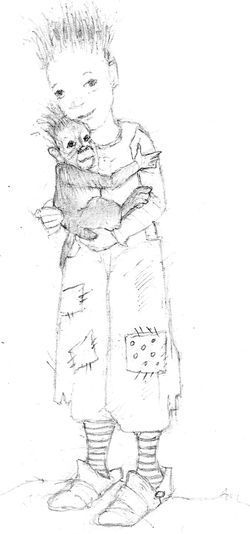 proclaiming it the very definition of consciousness (Georg Christoph Lichtenberg wrote something wise in his notebooks, to the effect of: only a man can draw a self-portrait, but only a man wants to) -- it becomes possible to say at least the following: the overwhelming tendency of all this scientific work, of its results, has been toward more consciousness. More species having it, and species having more of it than assumed. This was made boldly clear when the 'Cambridge Declaration on Consciousness' pointed out that those 'neurological substrates' necessary for consciousness (whatever 'consciousness' is) belong to 'all mammals and birds, and many other creatures, including octopuses.' The animal kingdom is symphonic with mental activity, and of its millions of wavelengths, we���re born able to understand the minutest sliver. The least we can do is have a proper respect for our ignorance.
proclaiming it the very definition of consciousness (Georg Christoph Lichtenberg wrote something wise in his notebooks, to the effect of: only a man can draw a self-portrait, but only a man wants to) -- it becomes possible to say at least the following: the overwhelming tendency of all this scientific work, of its results, has been toward more consciousness. More species having it, and species having more of it than assumed. This was made boldly clear when the 'Cambridge Declaration on Consciousness' pointed out that those 'neurological substrates' necessary for consciousness (whatever 'consciousness' is) belong to 'all mammals and birds, and many other creatures, including octopuses.' The animal kingdom is symphonic with mental activity, and of its millions of wavelengths, we���re born able to understand the minutest sliver. The least we can do is have a proper respect for our ignorance.
"The philosopher Thomas Nagel wrote an essay in 1974 titled, 'What Is It Like To Be a Bat?,' in which he put forward perhaps the least overweening, most useful definition of 'animal consciousness' ever written, one that channels Spinoza���s phrase about 'that nature belonging to him wherein he has his being.' Animal consciousness occurs, Nagel wrote, when 'there is something that it is to be that organism -- something it is like for the organism.' The strangeness of his syntax carries the genuine texture of the problem. We���ll probably never be able to step far enough outside of our species-reality to say much about what is going on with them, beyond saying how like or unlike us they are. Many things are conscious on the earth, and we are one, and our consciousness feels like this; one of the things it causes us to do is doubt the existence of the consciousness of the other millions of species. But it also allows us to imagine a time when we might stop doing that."
Amen.
In addition to Stuckey's book and Sullivan's essay, I recommend Brandon Kein's "Being a Sandpiper" (Aeon); Stephen M. Wise's "Nonhuman Rights to Personhood" (pdf); and Karen Joy Fowler's brilliant and devastating new novel, We Are All Completely Beside Ourselves. (Avoid reviews of the latter if you possibly can. The less you know about the story before you read it, the more wonderful it is.)
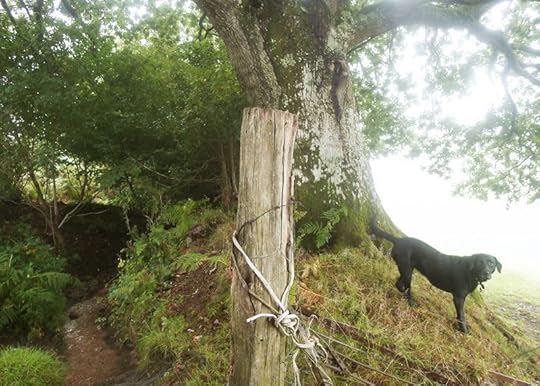 The passage by Priscilla Stuckey above is from Kissed by a Fox & Other Stories of Friendship in Nature (Counterpoint, 2012). The poem in the picture captions is from The Selected Poems of Wendell Berry (Counterpoint, 1999). You can hear the author read it here. All rights to the text above reserved by the authors.
The passage by Priscilla Stuckey above is from Kissed by a Fox & Other Stories of Friendship in Nature (Counterpoint, 2012). The poem in the picture captions is from The Selected Poems of Wendell Berry (Counterpoint, 1999). You can hear the author read it here. All rights to the text above reserved by the authors.
April 20, 2017
The practice of kindness
To continue our conversation on kindness:
One problem we have today is that many think of the word "kind" as a synonym for "nice," a quality with soft, even bland, connotations -- whereas true kindness is so much more than this. The practice of kindness requires empathy, compassion, and generosity aligned with keen perception, self knowledge, and clarity of purpose. It's not enough to be nice to live by a code of kindness, it requires fierce courage as well: The courage to be open-hearted. To be vulnerable. To rely on others, and be relied on in turn. To go against the grain of a culture devoted to self-aggrandizement and competitive individualism. To be misunderstood by that culture, or dismissed, and to remain kind nonetheless -- steadfast in purpose, focused on the practice of kindness, not the outcome. Kindess in this wider aspect is not limited to human relationships but extends to the way that we walk through the life, and engage with the nonhuman world around us. The code of kindness includes our relationship with the planet, and all who share it.
Scientist Barbara McClintock, for example, clearly lived by a code of kindness (even if she never defined it that way) -- and her open-hearted approach to research led to a revolution in our understanding of genetics. As Pricilla Stuckey explains:
"Looking at nature with compassion was a method of Barbara McClintock, the 1983 winner of the Nobel Prize in Physiology or Medicine. McClintock was a geneticist working to decipher the maize genome at the same time in the 1950s that her peers Watson and Crick were discovering the double helix structure of DNA. Unlike most geneticists, however, who thought of genes as fixed units, like pearls on a string, McClintock watched, puzzled, as maize genes jumped from their supposedly fixed postitions to take up other spots on the strand. McClintock's discovery of 'transposable' genetic elements inaugurated what Stephen Jay Gould called a second revolution in genetics....
"McClintock often said that in order to understand any organism, you have to 'get a feel for it.' In her small maize field she walked meditatively every morning during the growing season, memorizing the smallest changes in each plant from the day before. 'I start with the seedling,' she said, 'and I don't want to leave it. I don't feel I really know the story if I don't watch the plant all the way along. So I know every plant in the field. I know them intimately, and I find it a great pleasure to know them.'
"She regarded her stalks of maize, she said, with 'real affection,' watching each as if from the inside -- as if, a colleague remarked, she could write its autobiography. Gould observes that hers what the method of naturalists, who typically spend time watching and listening to -- and developing appreciation for -- the plants or animals or landscape they study, rather than, as most molecular biologists do, trying to isolate chemical chains of cause and effect. McClintock's genius lay in applying the method of naturalism to her work in the lab.
"Both a naturalist and a contemplative -- don't the two often go together? -- McClintock in her deep gazing may seem very familiar to those who have practiced meditation or gone on a retreat in a monestary or ashram. I think of one of her breakthrough moments in the laboratory, when, after some days of feeling stymied, unable to make sense of the tangled chromosomes under her microscope, McClintock took a walk to sit under a eucalyptus tree. She returned to the lab feeling energized. When she looked again through the microscope at the chromesomes, she reported,
'I found that the more I worked with them, the bigger and bigger [they] got, and when I was really working with them I wasn't outside, I was down there. I was part of the system...and everything got big. I was even able to see the internal part of the chromosomes....It surprised me because I actually felt as if I were right down there and these were my friends.'
"The process of looking closely at the chromosomes led her into a feeling of unity with them," notes Stuckey, "which led in turn to a more accurate understanding of how they operated, seeing them as clearly as if she were moving among them.
"What is remarkable about her form of contemplation, and what makes it accessible to nonscientists, is that, as one biographer wrote, her 'most mystical sounding ideas stemmed from observation and scepticism, not occult visitations.' She merely looked in, and in looking, loved. ' "
She merely looked, and in looking loved. That's what I aim for every day.
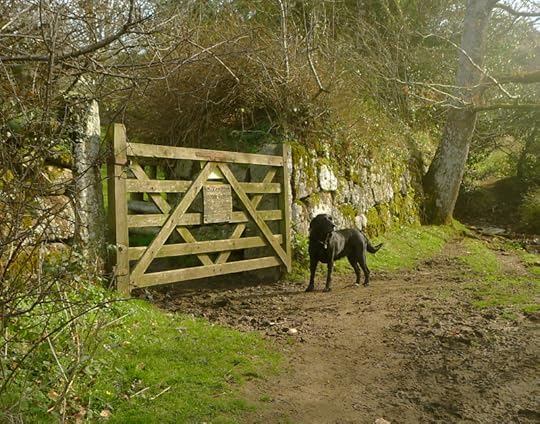 The passage above by Priscilla Stuckey is from Kissed by a Fox & Other Stories of Friendship in Nature (Counterpoint, 2012), which I highly recommend. All rights reserved by the author.
The passage above by Priscilla Stuckey is from Kissed by a Fox & Other Stories of Friendship in Nature (Counterpoint, 2012), which I highly recommend. All rights reserved by the author.
Terri Windling's Blog
- Terri Windling's profile
- 708 followers


